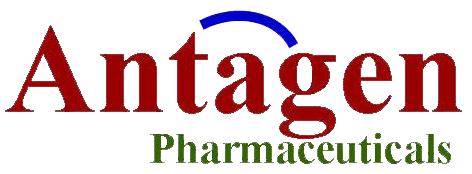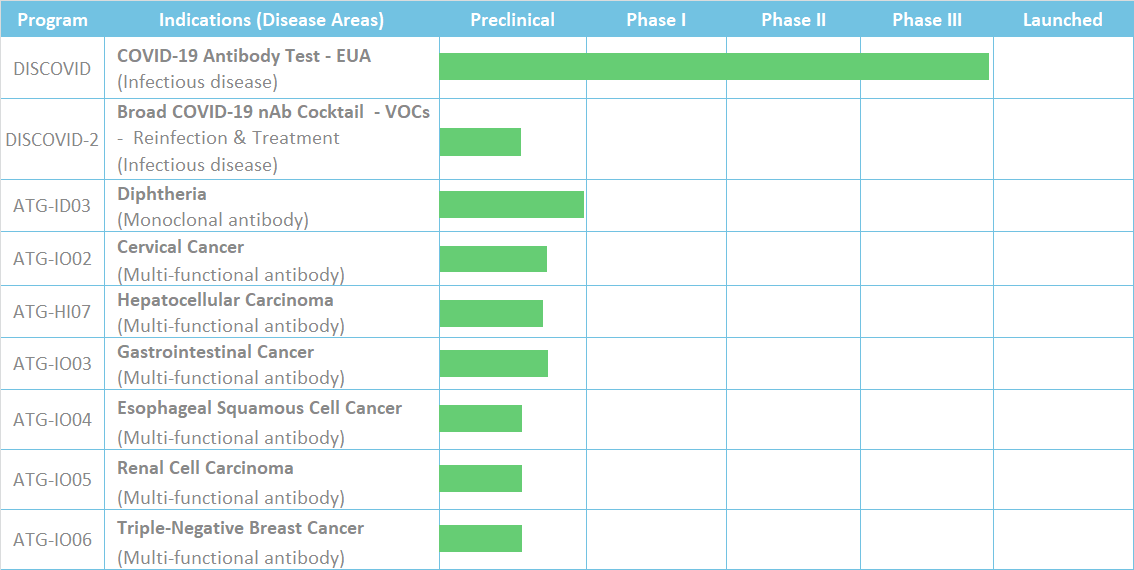Research & Development
Anti-SARS-Cov-2 Antibody Cocktail
with IgG-IgA Technology
Mucosa-Enriched Antibodies: The Next Generation Therapeutics against Infectious Diseases
Neutralizing antibodies (nAbs) against SARS-Cov-2 and variants have gained FDA EUA-permits and been trialed in the pre-exposure prophylaxis, post-exposure prevention or treatment of COVID-19 in adults and pediatric patients, which saved the lives of millions of people. This human IgG type of therapeutic nAbs at a dose range of 300mg - 1200mg mainly stays in human circulatory system after i.v. or s.c. injection and generates systemic (but NOT MUCOSAL) antibody responses to the invading pathogens such as SARS-Cov-2. Only insufficient amount of the nAbs makes their way to the mucosal surface to neutralize SARS-Cov-2.
For example, i.v. bolus injection of a human IgG1 (15 mg/kg) in pigs rendered 107 µg/mL hIgG1 in serum after 4 days, but only 0.33 µg/mL hIgG1 in bronchoalveolar lavage (BAL) at the same time. Therefore, it is conceivable that the majority of the intravenously injected SARS-CoV-2 neutralizing antibodies, at the doses ranging from 300 mg – 1200 mg, will not reach the lung mucosa and upper respiratory mucosa, the first line of the battle field, and will be wasted.
Our Method: IgG-IgA hybrid mimicking sIgA function in mucosa transcytosis
We created an IgA mimicry of IgG, with its Fc portion in fusion with the 18-aa tail piece (tp) of sIgA and the J chain, possessing sIgA’s full binding activity towards polymeric immunoglobulin receptor that mediates mucosa transcytosis. This IgG-IgA hybrid contains sufficient structural requirements for full binding to polymeric immunoglobulin receptor (pIgR), mimicking sIgA function in mucosa transcytosis against infectious agents such as diphtheria toxin and SARS-Cov-2.
We believe that by adopting this technology, the enrichment of i.v. injected IgG in lung mucosa can be increased by at least 30-fold. This can greatly reduce the treatment cost in patients receiving anti-SARS-CoV-2 neutralizing antibodies. For technology details, please click here.
Glyco-Engineered Immunotherapeutics
Glyco-Engineered Antibodies: The Next Generation Immunotherapeutics
Monoclonal antibodies (mAbs) are currently the largest and fastest growing class of biopharmaceuticals, and they address unmet medical needs, e.g., in oncology and in auto-immune diseases. Their clinical efficacy and safety is significantly affected by the structure and composition of their glycosylation profile which is commonly heterogeneous, heavily dependent on the manufacturing process, and thus susceptible to variations in the cell culture conditions. Glycosylation is therefore considered a critical quality attribute for mAbs. Commonly, in currently marketed therapeutic mAbs, the glycosylation profile is suboptimal in terms of biological properties such as Antibody-Dependent Cell-mediated Cytotoxicity (ADCC) or may give rise to safety concerns due to the presence of non-human glycans.
Our Method: Host Cell Line Engineering
We have developed proprietary CHO cell lines with altered (enhanced or eliminated) expression of glycosylation enzymes for fucosylation, sialylation and galactosylation. This gives us tools to express well-defined, uniform antibody glycoforms, which confers the desired biological properties for the target application. This approach offers significant benefits such as enhanced Fc effector functions, improved safety profiles, higher batch-to-batch consistency, decreased risks related to immunogenicity and manufacturing process changes, and the possibility to manufacture mAbs, in an economical manner.
Our Focus: Therapeutics with Glycosylation as MOA
Any therapeutics that glycosylation, particularly fucosylation and/or sialylation, affects its biological functions is our point of focus. For example, we have expressed and verified a battery of anti-cancer antibodies with >50 fold enhanced ADCC through complete defucosylation in our Fut8-/- CHO cell line. We have also been supported by NIH SBIR programs to develop HIV vaccines in our engineered CHO-ES(6) cell line with unique alpha2,6 sialylation on Env protein, which has been shown to be required for the development of broad neutralization antibodies. Other ongoing projects involve therapeutics with simultaneous defucosylation and sialylation for treating autoimmune disorders, mitigating pathogenic cytokine storms and viral entry in infectious diseases.


